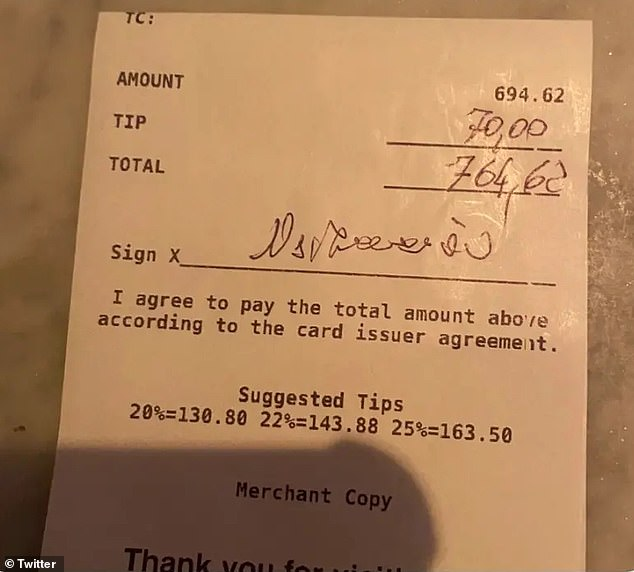Tipping Culture: A Clash of Customs
In the United States, servers in restaurants often rely on tips as their main source of income since they are not paid a livable wage. However, tipping customs vary across the globe, and Europeans, in particular, have different norms when it comes to tipping. Recently, a waitress from New York City expressed her frustration on social media after a large party of Europeans left a smaller tip than what she expected.

The Tip that Underwhelmed
Waitress Madison Tayt took to Twitter to share her disappointment about receiving only a $70 tip on a $700 bill from the European diners. In the American context, tipping around 20% is customary, and servers rely on this to make ends meet. However, in Europe, tipping standards differ as servers are paid a livable wage. Hence, tipping is often seen as a gesture of appreciation for exceptional service rather than an obligatory practice.
Tayt was disheartened that the European diners seemed unaware of the customary American tipping norms. In her now-deleted tweet, she expressed her frustration, saying, “Lmao, I f**king hate Europeans sometimes, on God. This table just left $70 on a $700 check after chilling for HOURS. My manager even asked about their service, and they were OVER THE MOON about their service, so he explained the customary tip is 20 percent, and they were like, ‘ok’ and left.”

Its Effect on Server Livelihood
For servers like Tayt, who depend on tips to cover essential expenses like food, rent, and clothing, receiving a smaller tip can be disheartening. She later revealed that the European table had an American among them, and Tayt hoped this individual would understand the tipping culture and nudge the group to tip more appropriately.
Understanding Cultural Differences
While one comment on Tayt’s tweet labeled Europeans as “basically the worst customers,” the server is open-minded and willing to overlook cultural differences if customers still tipped appropriately. Tayt acknowledges that behaviors such as lingering at tables or being direct might stem from cultural backgrounds. Despite these differences, she believes that tipping based on local customs shows respect and appreciation for the service provided.

A Lesson in Tipping Customs
Joe Stefanelli, CEO of Cryptech Solutions, shed light on the tipping customs in Europe. He shared his personal experience of tipping 25% in Amsterdam, only to be questioned about it. According to Stefanelli, tipping around 10% is customary in many parts of Europe, even for excellent service. He suggested that instead of singling out Europeans, it might be beneficial to broaden our horizons and understand the diversity of global tipping cultures.

Bridging the Gap
In a world where customs and traditions differ, it is crucial to find common ground and bridge gaps. While foreign customers may not be aware of American tipping customs, education and understanding can go a long way in fostering better interactions. Perhaps, by sharing insights into tipping customs and engaging with customers, servers like Tayt can build awareness and encourage appropriate tipping practices.
Do you think foreign customers should have tipped an American amount?






